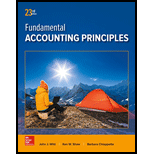
Introduction:
Ratio Analysis
• Ratio analysis is a study of several key metrics of a company based on the data presented in its’ financial statements with an objective to evaluate the financial health of a company.
• It is essential for investors, stakeholders, government bodies etc. to evaluate the key metrics of an entity in order to ensure that the company fulfills the going concern principle and displays financial stability.
The key metrics mentioned above include the following:
• Profit Margin – A measure of the Profit and turnover. It is an indicator of the profit earned by the business in percentage terms from each unit of goods sold.
• Debt Equity Ratio – A Measure of the total debt used to leverage the business in relation to the percentage of equity.
• Gross Margin Ratio – A measure of the gross margin earned from the turnover for the reporting period.
• Acid Test Ratio – Also known as quick ratio, it seeks to measure the liquidity position of the business.
•
• Basic Earnings per share – It is a measure of the net earnings of the equity shareholder on a per share basis.
• Inventory Turnover Ratio – A measure of the correlation between the inventory of the company and the total turnover evaluating the rollover of inventory in relation to turnover.
• Dividend Yield Ratio – It is a measure of the total dividend earned by the equity shareholder in relation to the shares held.
To Determine:
Whether the change in ratios are favorable or unfavorable.
Want to see the full answer?
Check out a sample textbook solution
Chapter 17 Solutions
Fundamental Accounting Principles
- Hawk, Inc. reported on its 2022 Statement of Cash Flows that it paid $95,400 for interest. The company reported $107,200 of Interest Expense on the 2022 Income Statement. The balance in Interest Payable on the 2022 Balance Sheet was $16,800. What was the balance in Interest Payable on the 2021 Balance Sheet? a) $5,000 b) $6,400 c) $16,800 d) $27,000 e) Unable to tell from the information given.arrow_forwardNeed help with this question solution general accountingarrow_forwardgeneral accountingarrow_forward
- What is the budgeted manufacturing cost per unit of this accounting question?arrow_forwardKenichi Industries had $420 million in sales last year and $310 million in fixed assets that were used at 70% of capacity. In millions, by how much could Kenichi's sales increase before it is required to increase its fixed assets?arrow_forwardAtlas Corp's sales last year were $365,000, and its year-end total assets were $410,000. The average firm in the industry has a total assets turnover ratio (TATO) of 2.6. The firm's new CFO believes the firm has excess assets that can be sold to bring the TATO down to the industry average without affecting sales. By how much must the assets be reduced to bring the TATO to the industry average, holding sales constant?arrow_forward

 AccountingAccountingISBN:9781337272094Author:WARREN, Carl S., Reeve, James M., Duchac, Jonathan E.Publisher:Cengage Learning,
AccountingAccountingISBN:9781337272094Author:WARREN, Carl S., Reeve, James M., Duchac, Jonathan E.Publisher:Cengage Learning, Accounting Information SystemsAccountingISBN:9781337619202Author:Hall, James A.Publisher:Cengage Learning,
Accounting Information SystemsAccountingISBN:9781337619202Author:Hall, James A.Publisher:Cengage Learning, Horngren's Cost Accounting: A Managerial Emphasis...AccountingISBN:9780134475585Author:Srikant M. Datar, Madhav V. RajanPublisher:PEARSON
Horngren's Cost Accounting: A Managerial Emphasis...AccountingISBN:9780134475585Author:Srikant M. Datar, Madhav V. RajanPublisher:PEARSON Intermediate AccountingAccountingISBN:9781259722660Author:J. David Spiceland, Mark W. Nelson, Wayne M ThomasPublisher:McGraw-Hill Education
Intermediate AccountingAccountingISBN:9781259722660Author:J. David Spiceland, Mark W. Nelson, Wayne M ThomasPublisher:McGraw-Hill Education Financial and Managerial AccountingAccountingISBN:9781259726705Author:John J Wild, Ken W. Shaw, Barbara Chiappetta Fundamental Accounting PrinciplesPublisher:McGraw-Hill Education
Financial and Managerial AccountingAccountingISBN:9781259726705Author:John J Wild, Ken W. Shaw, Barbara Chiappetta Fundamental Accounting PrinciplesPublisher:McGraw-Hill Education





